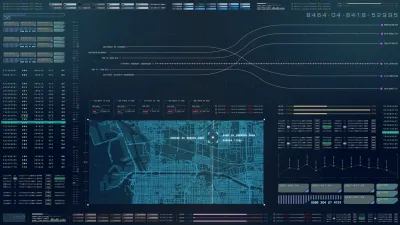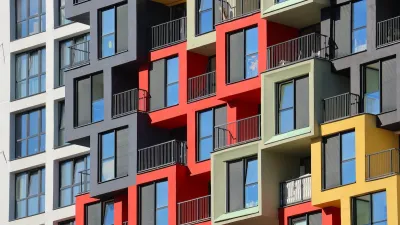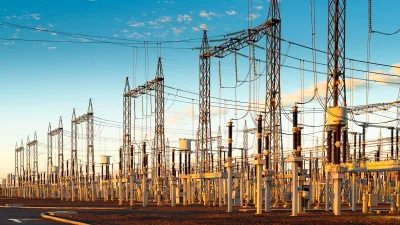Explore tech solutions enhancing urban service delivery, fostering better citizen engagement and efficiency in municipal operations.

Most cities' municipal services are in desperate need of modernization. With the right technologies, they can bring themselves into the digital age, improving citizen interactions. What solutions can urban planners leverage for a better tomorrow?
Why should cities modernize municipal services?
Most cities rely on outdated, unconnected technologies that make basic recordkeeping, communication, and public engagement challenging. By modernizing with innovative solutions, they can streamline administrative processes, increase service efficiency, save taxpayer money, and improve resident satisfaction.
Most cities already use technology to improve interactions with citizens. As of 2020, 67 percent have a platform to publicize data, and seven in 10 communicate digitally. While these approaches are novel now, they may soon become standard, meaning those waiting to adopt modern tools and systems may be left behind.
Many municipal services are infamously slow or clunky, thanks to outdated systems. Considering that 64 percent of people value speed as much as price, this sluggishness is no longer acceptable. The more efficient and technologically advanced a city is, the more people will be drawn to move or visit.
Examples of technology enhancing city services
There are several innovative options for enhancing city services for residents.
Blockchain technology
Decentralized ledger technology is immutable and transparent. In other words, all records become permanent, tamper-proof and visible as soon as they’re entered. You could use blockchain-based credentials to enroll residents quickly in social programs or prevent fraud by having them create digital IDs.
Online self-service portals
Online self-service portals are ideal for urban areas because they’re constantly available, require little oversight and act as a convenient intermediary. You can use them to make payments, view schedules, access documents or check when bills are due.
Mobile apps
Mobile apps offer straightforward solutions to various problems, whether you want to streamline communication or digitize services. Since nine in 10 Americans owned a smartphone in 2023, most people can easily download the city’s official app, making this an ideal platform.
AI-powered chatbots
Chatbots can field all service-related questions. Whether citizens ask when the Department of Motor Vehicles opens or how to pay their property taxes, they’ll get a real-time answer. Machine learning algorithms can interact with thousands of people simultaneously and process queries in seconds, so they’ll rarely — if ever — reach capacity.
How urban planners can apply these solutions
Urban planners can leverage modern technologies in several ways, the first being payments. Whether a taxpayer has to pay their property taxes or a homeowner needs to pay their monthly gas bill, an online platform would accelerate the process. It would also benefit cities by ensuring they receive the funds on time and helping them track deposits.
Another use case involves public requests. Whether citizens want to report a streetlight’s burnt bulb, a pothole in the road, or standing stormwater in a ditch, they can use chatbots, mobile apps, self-service portals, or blockchain technology. They can communicate their concerns faster, expediting service delivery.
Information dissemination is the final way urban planners can leverage these solutions. They can send updates on service delays, bill changes, or estimated project lengths to keep citizens informed and happy. Public sector workers will field fewer questions, giving them more time to prioritize pressing or valuable responsibilities.
Pre-integration considerations for urban planners
How do you modernize without leaving people behind? Inclusive, user-friendly design is critical. You must consider accessibility needs, language barriers, and technology penetration rates to determine the best solution for the city and its people.
Even then, extensive training is essential to ensure public sector employees know how to use every tool equitably, securely, and effectively. Their understanding can affect residents’ privacy and satisfaction, so multiple courses are ideal — many will be too used to outdated systems.
The last major consideration involves scalability and demand. Does the city have the infrastructure to support a platform to service 50,000 residents? What about 500,000? You must select and develop a solution that meets their needs and can handle high-capacity loads.
The future of technology-driven municipal services
Before social media, cities used radio and cable to communicate, take requests, and publicize data. Before that, they relied on local newspapers. As far off as modernization seems, it will become standard. As public sector staff and citizens adjust to new technologies, they’ll bridge gaps, resolve pain points, and discover new opportunities.

Alabama: Trump Terminates Settlements for Black Communities Harmed By Raw Sewage
Trump deemed the landmark civil rights agreement “illegal DEI and environmental justice policy.”

Planetizen Federal Action Tracker
A weekly monitor of how Trump’s orders and actions are impacting planners and planning in America.

The 120 Year Old Tiny Home Villages That Sheltered San Francisco’s Earthquake Refugees
More than a century ago, San Francisco mobilized to house thousands of residents displaced by the 1906 earthquake. Could their strategy offer a model for the present?

San Francisco Opens Park on Former Great Highway
The Sunset Dunes park’s grand opening attracted both fans and detractors.

Oregon Legislature to Consider Transit Funding Laws
One proposal would increase the state’s payroll tax by .08% to fund transit agencies and expand service.

Housing Vouchers as a Key Piece of Houston’s Housing Strategy
The Houston Housing Authority supports 19,000 households through the housing voucher program.
Urban Design for Planners 1: Software Tools
This six-course series explores essential urban design concepts using open source software and equips planners with the tools they need to participate fully in the urban design process.
Planning for Universal Design
Learn the tools for implementing Universal Design in planning regulations.
Clanton & Associates, Inc.
Jessamine County Fiscal Court
Institute for Housing and Urban Development Studies (IHS)
City of Grandview
Harvard GSD Executive Education
Toledo-Lucas County Plan Commissions
Salt Lake City
NYU Wagner Graduate School of Public Service






























